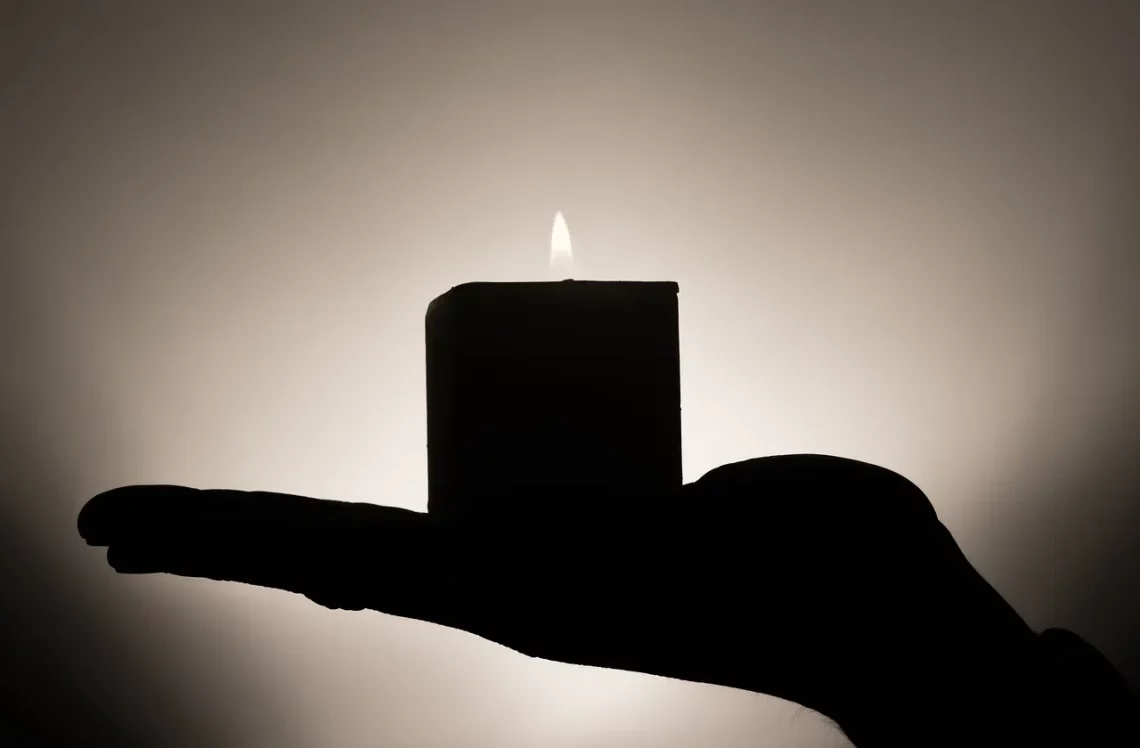
Understanding the Meaning of a Blue Candle in Spiritual Practices
The use of candles in spiritual practices has been a significant element across various cultures and traditions for centuries. Candles serve not only as a source of light but also as potent symbols of intention, energy, and connection to the divine. Among the myriad of colors available, each hue carries its unique connotations and meanings. One color that stands out for its spiritual significance is blue.
Blue candles are often associated with tranquility, healing, and communication. Their calming presence can create an atmosphere conducive to meditation and reflection. The color blue has been linked to the throat chakra, which governs self-expression and the ability to communicate effectively. This connection amplifies the spiritual significance of blue candles, making them valuable tools for those seeking clarity, peace, and emotional healing.
As we delve deeper into understanding the meaning of a blue candle in spiritual practices, we’ll explore various facets of its symbolism and applications. From its role in rituals to its significance in personal growth and healing, the blue candle serves as a powerful ally on one’s spiritual journey.
The Symbolism of Blue in Spirituality
The color blue has long been revered across diverse spiritual traditions for its rich symbolism. It is often associated with the sky and the sea, evoking feelings of openness, depth, and tranquility. In many cultures, blue represents wisdom, stability, and trust. This connection to nature fosters a sense of peace, aligning perfectly with the spiritual intentions associated with blue candles.
In spiritual symbolism, blue often signifies a higher level of consciousness. It is a color that encourages introspection and self-awareness. When individuals light a blue candle, they may find themselves drawn into a state of meditation or contemplation, allowing them to connect with their inner selves and the universe around them. This deep connection to the spiritual realm can manifest in various ways, such as enhanced intuition and a stronger sense of purpose.
Furthermore, blue candles are frequently used in rituals aimed at healing emotional wounds. The calming energy of blue can help soothe anxieties and promote a sense of inner peace. Many practitioners believe that lighting a blue candle during times of stress or emotional turmoil can aid in releasing negative energy and fostering a more serene mental state. This makes blue candles particularly popular for rituals focused on forgiveness, healing, and emotional release.
The significance of blue also extends to communication. In many spiritual practices, blue is linked to the throat chakra, which regulates our ability to express ourselves. Lighting a blue candle can enhance one’s ability to articulate thoughts and feelings, making it a powerful tool for those seeking to improve their communication skills or resolve conflicts. By focusing on the flame of the candle, individuals can channel their intentions and desires for clarity and understanding in their interactions with others.
Overall, the symbolism of blue in spirituality is multifaceted, encompassing aspects of tranquility, healing, and communication. These qualities make blue candles invaluable tools in various spiritual practices, aiding practitioners in their quest for personal growth and enlightenment.
Using Blue Candles in Rituals and Meditations
Incorporating blue candles into rituals and meditation practices can significantly enhance the spiritual experience. Rituals often serve as a bridge between the physical and spiritual realms, and the use of specific colors can amplify the energy and intention behind these practices. Blue candles are particularly effective in rituals centered on healing, communication, and emotional balance.
When preparing for a ritual that involves a blue candle, it’s essential to create a sacred space. This can be achieved by cleansing the area of negative energy, arranging meaningful objects, and setting a clear intention for the ritual. Once the space is prepared, lighting a blue candle can help focus energy and enhance the overall atmosphere.
During meditation, a blue candle can serve as a focal point. As you sit in silence, concentrate on the flame and allow the calming energy of the blue color to wash over you. This practice can help quiet the mind and promote deeper introspection. Many find that visualizing the blue light enveloping them can create a sense of protection and peace, facilitating a more profound connection to their inner selves and the universe.
Additionally, blue candles are often used in prayers and affirmations. When reciting affirmations related to healing, communication, or emotional balance, lighting a blue candle can enhance the power of your words. The flame symbolizes the energy of your intentions being released into the universe, amplifying your desires and prayers.
Furthermore, after completing a ritual with a blue candle, it’s essential to express gratitude. Acknowledging the energy and guidance received during the practice can foster a deeper connection to the spiritual realm. This sense of appreciation can be a powerful way to close the ritual and solidify the intentions set forth.
In summary, using blue candles in rituals and meditations can amplify spiritual practices, promoting healing, better communication, and emotional balance. By creating a sacred space, focusing on the flame, and expressing gratitude, practitioners can harness the calming energy of blue to enhance their spiritual journey.
The Healing Properties of Blue Candles
The healing properties of blue candles are deeply rooted in their ability to promote emotional well-being and tranquility. As mentioned earlier, blue is associated with the throat chakra, which plays a crucial role in communication and self-expression. By lighting a blue candle, individuals can tap into this energy to facilitate healing on both emotional and spiritual levels.
One of the primary healing aspects of blue candles is their ability to alleviate stress and anxiety. The calming energy of blue can create a serene atmosphere, allowing individuals to unwind and release pent-up tension. In times of emotional turmoil, lighting a blue candle can serve as a reminder to breathe and reflect, fostering a sense of inner peace.
Moreover, blue candles are often used in healing rituals aimed at resolving emotional pain. Whether it’s grief, anger, or resentment, lighting a blue candle can symbolize the release of negative emotions. As the candle burns, practitioners may visualize their emotional wounds being healed, allowing forgiveness and acceptance to take root.
In addition to emotional healing, blue candles can also support physical well-being. While they are not a substitute for medical treatment, many practitioners believe that the calming properties of blue can aid in reducing physical symptoms associated with stress, such as headaches and tension. By fostering a peaceful environment, blue candles can enhance relaxation and promote overall well-being.
Another significant aspect of blue candles is their ability to enhance clarity and focus. When individuals are struggling with confusion or uncertainty, lighting a blue candle can help clear mental fog and promote a sense of direction. This clarity can be invaluable in making important decisions or navigating challenging situations.
In conclusion, the healing properties of blue candles encompass emotional, spiritual, and even physical aspects. By promoting tranquility, facilitating emotional release, and enhancing clarity, blue candles serve as powerful tools for those seeking healing and balance in their lives.
Integrating Blue Candles into Daily Spiritual Practices
Incorporating blue candles into daily spiritual practices can significantly enhance one’s connection to self and the universe. By establishing a routine that includes the use of blue candles, individuals can foster a deeper sense of awareness and intention in their everyday lives.
One effective way to integrate blue candles into daily practice is through morning rituals. Starting the day by lighting a blue candle can set a positive tone, promoting feelings of calm and clarity. As the candle burns, practitioners can take a moment to reflect on their intentions for the day ahead. This practice not only helps to center the mind but also encourages a proactive approach to daily challenges.
Additionally, blue candles can be used during journaling or self-reflection exercises. As individuals write down their thoughts and feelings, lighting a blue candle can create a sacred space for introspection. The calming energy of the candle can help facilitate a deeper understanding of one’s emotions and experiences, leading to personal growth and self-awareness.
For those who practice gratitude, incorporating blue candles can also be beneficial. Lighting a blue candle while expressing gratitude can amplify feelings of appreciation and contentment. This practice serves as a powerful reminder of the positive aspects of life, fostering a more optimistic outlook and emotional well-being.
Furthermore, blue candles can play a role in establishing a bedtime routine. Lighting a blue candle in the evening can create a peaceful atmosphere, promoting relaxation and restful sleep. As the day winds down, the calming energy of the blue candle can help ease the mind and prepare the body for rest.
In summary, integrating blue candles into daily spiritual practices can enhance one’s sense of awareness, clarity, and emotional well-being. By establishing morning rituals, using candles during journaling, expressing gratitude, and creating a calming bedtime routine, individuals can harness the power of blue candles to enrich their spiritual journey.
In conclusion, blue candles hold significant meaning within various spiritual practices, serving as powerful tools for healing, communication, and personal growth. Their calming energy and symbolism offer practitioners a unique way to connect with themselves and the universe, enhancing their spiritual journeys.
**Disclaimer:** This article is not intended as medical advice. Always consult a healthcare professional for any health-related concerns or conditions.




